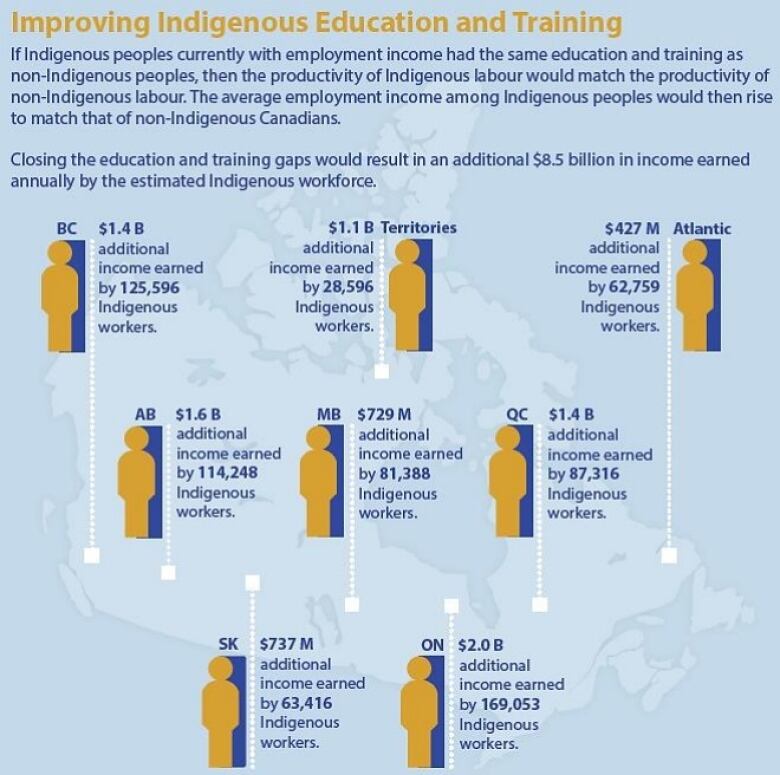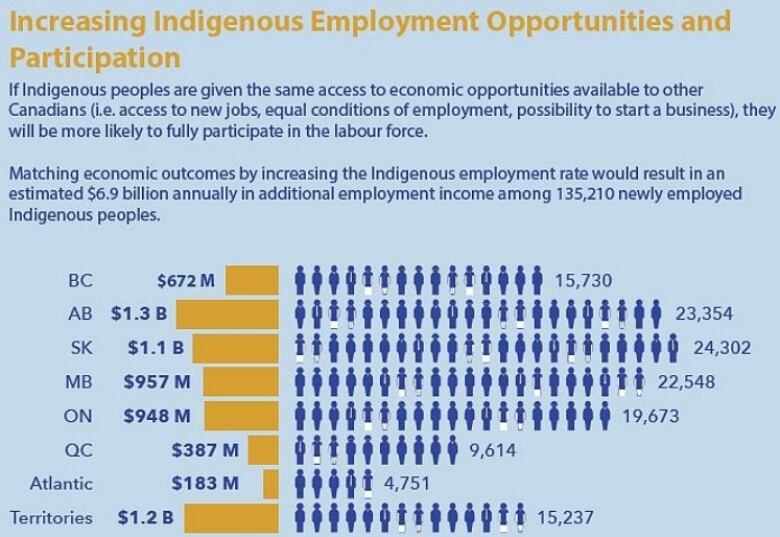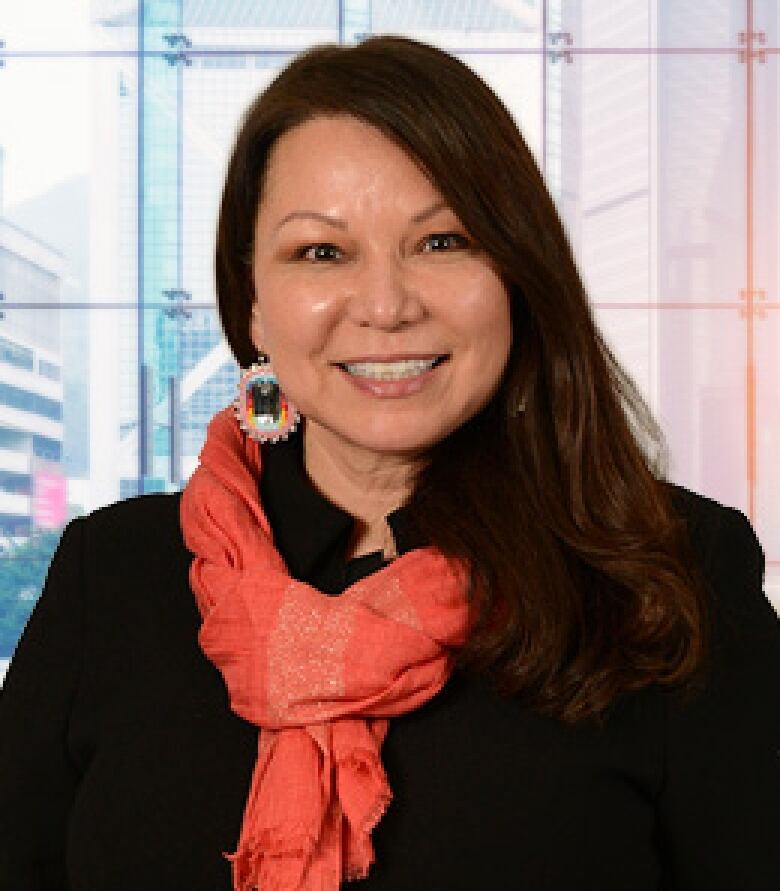Canada's untapped Indigenous workforce worth $27.7B, new report says
Huge economic gap exists in income, education and training, says economic development board

Canada is missing out on a whopping $27.7 billion annually because of its"under-utilized" indigenous workforce, according to a new national report by the National Aboriginal Economic Development Board.
The report says a huge economic gapexists between Canada's Indigenous and non-Indigenous population in terms of income, education and training.
"We had a look at that and said,'If we were to close that gap between indigenous and mainstream Canadians, what would that amount to?'" said Dawn Madahbee Leach, vice-chair of the organization that gives recommendationsto the Minister of Indigenous and Northern Affairs.
- Program trains Indigenous youth for careers in natural resources
- Liberal budget includes billionsinnew spending for aboriginal people
With Canada's aging population, and a fast-growing, young Indigenous population, Leach saidnow is the time to get Indigenous people trained up tofill that gap.
"There's a lot of people retiring, the baby boomers," saidLeach. "And the Indigenous population...we have a workforce ready and willing to come on board."
The report was presented to the minister's officethis week.
The breakdown
The $27.7 billion figure is the estimated potential value of a fully-working, Indigenous workforce in Canada over the age of 15.
The reportusesStatistics Canada's numbers for 2015.
First, the report takesthe estimated number of Indigenous people with income, and looks at how much more money they'd make if their income matched that of Canada's non-Indigenous.
Nunavut hasthe highest average income gap at a hefty $52,000, followed by the N.W.T., with a gap of almost $30,000.

If all the income gaps are closed, the value of the Indigenous workforce would be around $8.5 billion a year.
The report assumesthis gap will be closed with more education and training for the Indigenous population.
Next, the reportlooksat the impact of engaging the currently untapped Indigenous population.

It calculates the number of a new Indigenous working population by assuming the employment rate will match the non-Indigenous employment rate. If that happens, the newly working Indigenous population is worth$6.9 billion annually.
The North hasa potential of generating $1.2 billion from its currently "under-utilized" Indigenous labour force, according to the report.
The report also calculates a further $8.7 billion gain fromeliminating the cost of poverty from social assistance,health care tohousing programsthat is currently burdening the government.
All of that together, calculated with Canada's GDP indicators, creates the $27.7 billion figure in the report.
"This is about a 1.5 per centboost in the country's GDP," says the report.
Calculations don't address infrastructure gap
But the calculations don't considerthe potential costs that wouldgo into investing in educatingand training hundreds of thousands of Indigenous people.
And the cost will be massive,according to JP Gladu, the president and CEO of the Canadian Council forAboriginal Business.
- First Nations family living in 'horrifying' conditions offered gift of new home
- First Nations housing called 'ticking time bomb' in Manitoba
"We're chronically under-funded in our school systems," saidGladu. "The quality of education and infrastructure surrounding it is one of the biggest gaps in this country."
Gladu said that building up the currently "subpar"infrastructure for Indigenous communities is necessaryfor closing the economic gap. An infrastructure deficitrange of $50 and $570 billion exists in all ofCanada, according to a 2013 report from the Canadian Chamber of Commerce.
We're so far behind that it's going to take significant energy, time and resources to get caught up.- JP Gladu, President of Canadian Council for Aboriginal Business
"We're talking about schools, water, homes, energy. All of these things to growsustainable young people in our communities," he said.
Some billions of dollars would go into closing the infrastructure gap, according to Gladu.
"We're so far behind that it's going to take significant energy, time and resources to get caught up."
Create an action plan like Australia
Leach saidthat the government alone is not responsible for closing the gap.
"We're calling upon corporate Canada. We're calling up agencies such as the health sectors... and educationalinstitutions," saidLeach.

The first concrete step, she suggests, is a concrete action plan that stems from recommendations from theTruth and Reconciliation Commission.
"We believe that full reconciliation can't occur without economic parity," said Leach.
She said Australia is a good example. Reconciliation Australia, a group dedicating to championing reconciliation action plans, set up plans and promotes them throughout the country. Their websiteshows a long list of corporations in Australia that developed a reconciliation strategy.
with files from Garrett Hinchey, Loren McGinnis












_(720p).jpg)


 OFFICIAL HD MUSIC VIDEO.jpg)
.jpg)



























































































